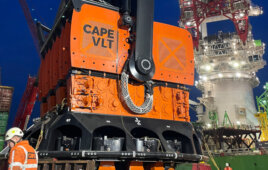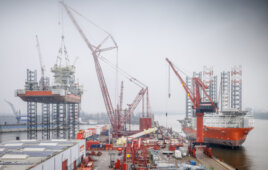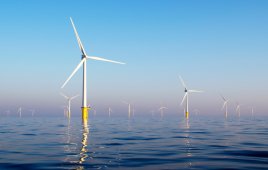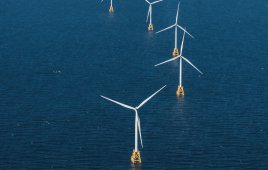Berkeley Lab has released a new paper titled “Benchmarking Anticipated Wind Project Lifetimes: Results from a Survey of U.S. Wind Industry Professionals.” This work draws on a survey of wind industry experts to clarify trends in the expected useful life of land-based wind power plants in the United States. It follows from a related survey earlier this year on wind-project operational expenditures.

Figure 1
The expected useful life of a project is the period of time in which expected costs and revenues are assessed to determine a project’s economic viability. A longer assumed life may enhance the expected long-term profitability of a project, assuming any resulting increase in O&M costs is kept within reasonable bounds. Moreover, longer depreciation terms reduce annual book depreciation from an accounting perspective, thereby boosting net income in the near term. From a planning and modeling perspective, longer lifetimes may enable a lower levelized cost of wind energy by recovering capital costs over additional years of electricity production.
BL’s interest was in better understanding how expectations for useful life have changed over time, as the wind industry has matured. The group found that most wind project developers, sponsors and long-term owners have increased project-life assumptions, from a typical term of ~20 years in the early 2000s to ~25 years by the mid-2010s and ~30 years more recently. Current assumptions range from 25 to 40 years, with most respondents citing 30 years (Figure 1).
More mature and robust technology, coupled with improved understanding of performance, wear-and-tear and O&M practices, have been key enablers of longer assumed project lives. Another driver is the increasing desire, and perhaps even need, to capture project value beyond the 10- to 20-year term of the initial power purchase agreement. Though these extended useful life assessments are underpinned by increasingly sophisticated engineering and economic analyses, the actual useful lives of wind projects cannot be known in advance, and will ultimately depend on how O&M requirements and practices change as projects age, as well as on future wholesale power price developments.

Figure 2
Assuming a 20-year project life, the estimated average levelized cost of energy (LCOE) for new wind projects built in 2018 is $40.4/MWh (real 2018$). With a 25-year useful life and no change in assumed O&M expenditures or wind plant performance over time, LCOE declines by 10%, to $36.2/MWh. At the now-common 30-year assumed life, levelized costs decrease another 7%, to $33.5/MWh. Even longer assumed lifetimes lead to further (but diminishing) LCOE reductions (Figure 2). These calculations simplistically assume that O&M costs only scale with inflation regardless of useful life and that performance does not degrade over longer time periods. Consequently, the analysis overstates the benefits of extended project lifetimes, though is still suggestive of a potentially significant LCOE reduction.
These data and trends can inform assumptions used by electric system planners, modelers and analysts. The results may also provide useful benchmarks to the wind industry, helping developers and assets owners to compare their expectations with those of their peers.
The Lawrence Berkeley National Laboratory report on project life can be found here. This follows from a study completed earlier this year on operational expenditures for land-based wind, which can be found here. The research was funded by the Wind Energy Technologies Office of the U.S. Department of Energy.
News item from Berkeley Lab
Filed Under: News




